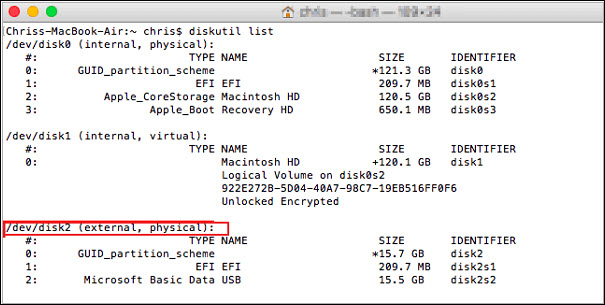
- MAC OS FAT32 FORMAT HOW TO
- MAC OS FAT32 FORMAT MAC OS
- MAC OS FAT32 FORMAT DRIVERS
- MAC OS FAT32 FORMAT UPDATE
- MAC OS FAT32 FORMAT WINDOWS
Step 5: Then, type the select disk+disk number, e.g- select disk 2 > press “ Enter“. After doing so, all disk drives will be listed there, including your external hard drives. Step 4: Next, type list disk & press “ Enter“. Now, type the below command lines in the given order: Step 3: Under The command prompt Window, you need to type the diskpart > hit the “ Enter“. Step 2: Make right-click on the Command Prompt > select the “ Run as administrator” option. Step 1: At first, type the cmd in a search box In order to format the volume greyed out issue, you can use the CMD option.
MAC OS FAT32 FORMAT HOW TO
How To Format External Hard Drive FAT32 In Mac Disk Utility? After updating a disk driver/extension, you need to reboot your Mac, re-connect an external hard drive to your Mac, then remount this drive.
MAC OS FAT32 FORMAT MAC OS
Or if you get some error messages like “ System Extension Blocked“, it simply means that a disk driver on your Mac OS isn’t working due to the lack of an extension, and you can easily enable this extension to be loaded in “Security and Privacy”.

MAC OS FAT32 FORMAT UPDATE
In order to update the outdated disk driver, simply open the App Store and select the update if there you can see the update option available.
MAC OS FAT32 FORMAT DRIVERS
However, if your external drive won’t mount in the Disk Utility, simply restart your Mac system & try again.Īnother option that you can try to fix FAT32 greyed out on Mac Disk Utility is to update the basic drivers & extensions. In order to do so, first, choose your external hard drive > make a tap on the “ Mount” option which you can see at the upper menu bar. Therefore, you can try to mount your hard drive in a Disk Utility. I was hoping that after doing the above step I could unmount and then get disk utility to mount it properly, now that the kernel module was loaded, but no such luck.Sometimes, it may happen that your FAT32 is greyed out in Mac Disk Utility because it isn’t mounted. This has the disadvantage that automounter is not taking care of the mounting and dismounting, when I'm done, I will want to remove the mount directory and such. Which worked, and explains why I couldn't get Disk Utility to mount the volume: the msdos filesystem kernel module was not loaded. Kextload: /System/Library/Extensions/msdosfs.kext loaded successfully $ sudo mount_msdos /dev/disk1s7 Desktop/pcdisk/ Mount_msdos: msdos filesystem is not available You must be running as root to load modules into the kernel $ mount_msdos /dev/disk1s7 Desktop/pcdisk/ Also, notice that you can use disk utility to partition the disk, and only newfs the partition you want (you don't have to make the entire disk fat32, I like to have an HFS+ partition as well).Īlso, I couldn't get the partition to mount following the instructions. % man fdisk % fdisk -e /dev/rdisk4fdisk: could not open MBR file /usr/standalone/i386/boot0: No such file or directoryEnter 'help' for informationfdisk: 1> auto dosfdisk:*1> writeWriting MBR at offset 0.fdisk: 1> quit % newfs_msdos -F 32 -v "MUSIC1" /dev/rdisk4s1/dev/rdisk4s1: 156263232 sectors in 2441613 FAT32 clusters (32768 bytes/cluster)bps=512 spc=64 res=32 nft=2 mid=0xf0 spt=32 hds=255 hid=0 bsec=156301425 bspf=19076 rdcl=2 infs=1 bkbs=6 If it isn't, close and reopen Disk Utility, select "MyVolumeName" and choose File -> Mount."Here's a transcript (line breaks added for narrower display) to show how I formatted an 80GB external firewire drive. Type newfs_msdos -F 32 -v "MyVolumeName" /dev/rdisk#s1, where # is the disk number you got in step one.

Finally, type write and then quit to save the new partition table. Now type auto dos to create one big FAT32 partition.

Open Terminal and type fdisk -e /dev/rdisk#, where # is the disk number you got from step one. You're looking for the "Disk Identifier," which should be something like disk1, disk2, disk3 etc. Find the disk in the list that you want to format, control-click and select "Information". Today I've found a way to do the same on Mac OS X. Linux will create very large FAT32 partitions (if you have Linux at your disposal).
MAC OS FAT32 FORMAT WINDOWS
Windows XP will create a FAT32 partition no greater than 32GB. For external drives you want to share between Linux, Windows, and Mac OS X, they must be in FAT32 format.


 0 kommentar(er)
0 kommentar(er)
